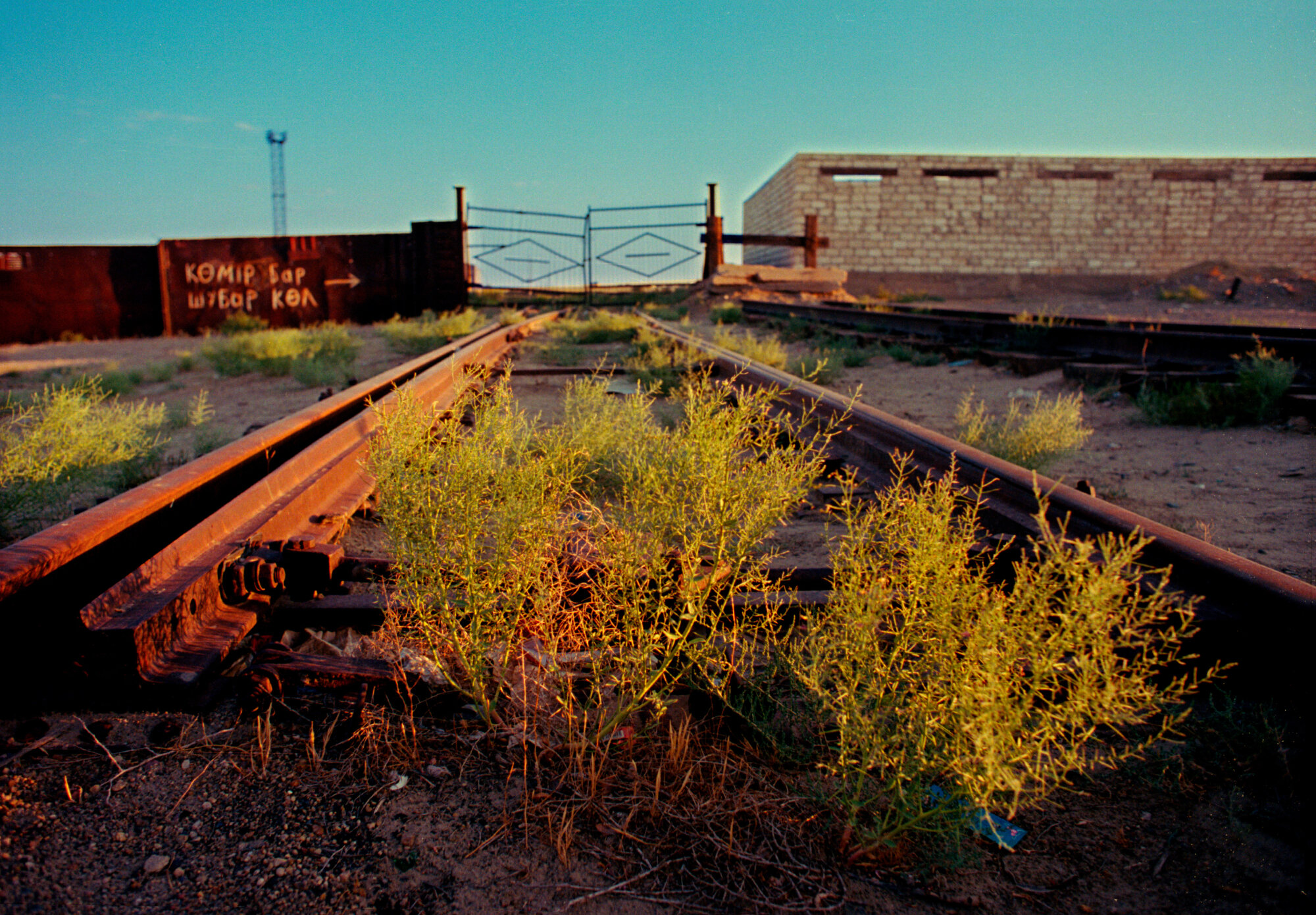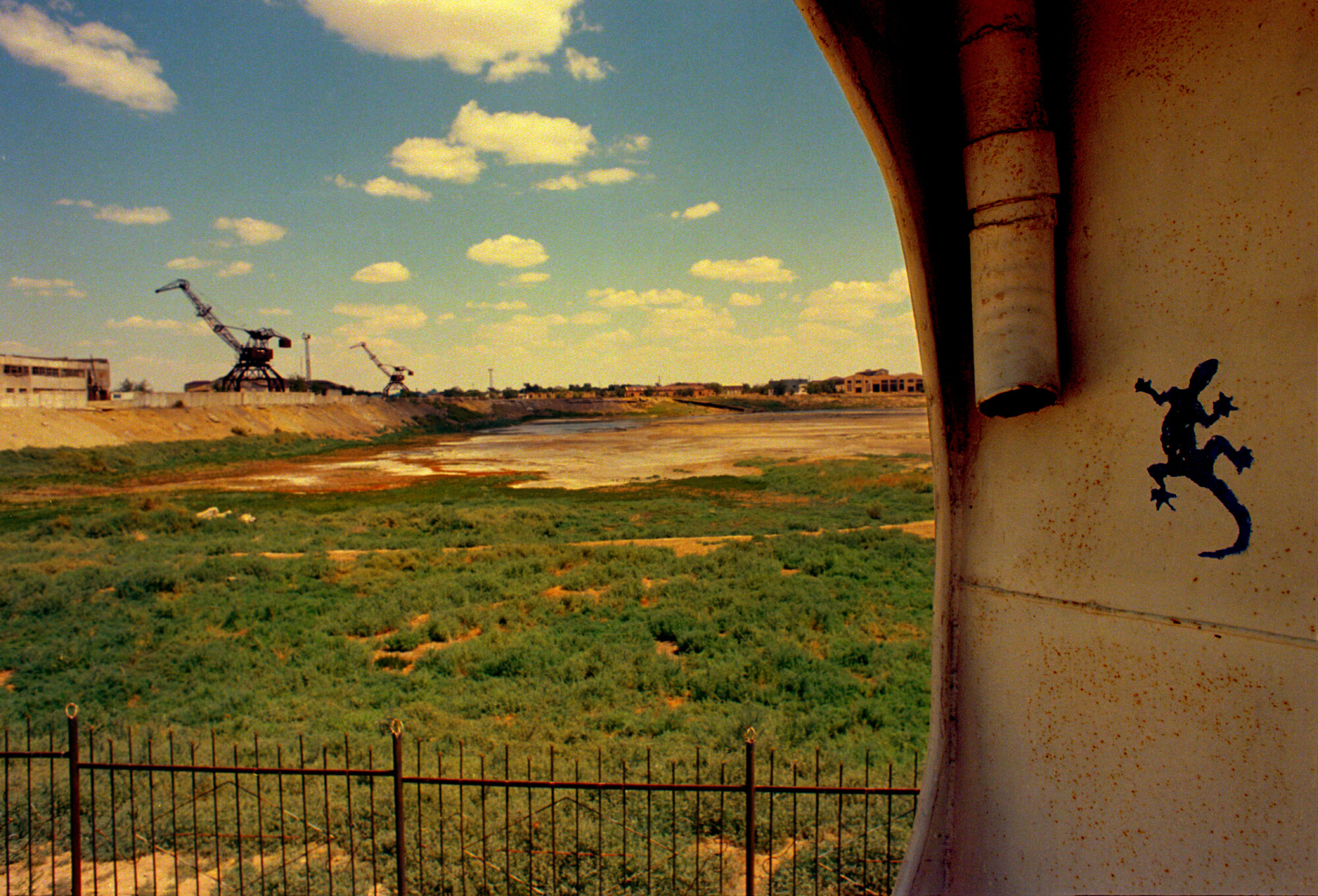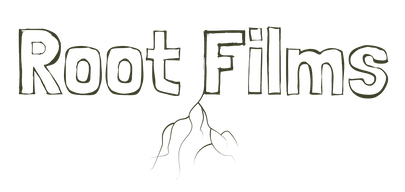Migrant Water
Multimedia installation by Toma Peiu, Alice F. Hill, Luiza Parvu, Peter Cusack, Timothy Dunn, 2018
Between the concepts of “migrant labor” and “virtual water”, we examine connections of the missing water to the missing people of the Aral Sea basin in Central Asia: a vast ecosystem whose arid, dry downstream flatlands are shaped by the state’s decision to pursue centralized agriculture, and whose upstream water sources in the high mountain glaciers of the Pamir and Tien Shan ranges are now increasingly affected by climate change.
A media archaeological toolbox juxtaposes bibliography, datasets and observation with immersive 360 video, animated satellite imagery, sound maps, personal narrative, and 3D film photography, to critically capture the memory and metamorphosis of the environment and public urban space, under stress from the commodification of water, land, and labor. All of the individual components are mobile / portable / low fi, so that they may be accessible to a variety of publics in any kind of venue, with a few to no technological requirements.
How do flows of water, land, and labor shape the future of our planet in a context of growing inequality between those who control resources, and bodies subjected to increased regulation? We imagine a research model able to look beyond discipline-specific narratives and to reveal the ripple effects of the economy of water in the Aral Sea basin by placing them at the center of the world.
Composed of four distinct pieces:
Message in a Bottle: Field Diary
Toma Peiu, Luiza Parvu
Media: retroviewer, 35mm Kodak Ektar film, headset, MP3 player, text and voice over narration
Welcome to Muynaq (2018)
Railroad tracks in former port (Aral, 2018)
Former fish processing station (Muynaq, 2018)
Crane (Muynaq, 2018)
Fishermen and construction (Muynaq, 2018)
Shipyard bay (Aral, 2018)
Taxi station (Muynaq, 2018)
accompanied by audio / spoken word and printed text of Samples from a Field Diary
written & read by Toma Peiu
photo & sound editing by Luiza Parvu
as written and discussed with Luiza, Makhmud, Sagit, Yusup, Ali, Aman
On the Bottom of the Sea
Toma Peiu, Luiza Parvu
Media: 360 video, sound, headset, mobile phone
7 landscapes from a former seabed
Smoke (Muynaq, 2018)
Salt (Aral, 2018)
Fish (Muynaq, 2018)
Camels (Aral, 2018)
Bottle (Muynaq, 2018)
Cows (Muynaq, 2018)
Ship + insects (Muynaq, 2018)
Virtual Water
Alice Hill, Timothy Dunn, Toma Peiu
blackout cotton, dyed linen, cotton flowers, 2D animation, projector
Global trajectories of virtual water cotton exports from the Aral Sea basin: 1960 – 2016
“Virtual water” refers to the water exported by way of water used to produced a traded commodities.
Data sources:
1960-1971 Exports of cotton from USSR, by country of destination: USDA Foreign Agriculture Service Cotton Production Report (1973)
1979 Exports of cotton from USSR, by country of destination: USSR trade yearbooks (http://istmat.info/node/21347 )
1988-2016 total annual cotton export quantity per country: USDA Foreign Agriculture Service PSD database (https://apps.fas.usda.gov/psdonline)
1995-2016 Central Asian raw cotton export distribution as a relative percent to export destination countries: MIT Observatory of Economic Complexity (https://atlas.media.mit.edu/en)
Water use estimations for raw cotton yields: Waterfootprint.org
USGS time series of processed Landsat aerial images
Shamaldy-Say sound map
Peter Cusack
Media: interactive sound map, headphones, ipad
The Shamaldy-Say sound map is part of “Aral Sea Stories”, a project that explores the environment and culture of the Aral Sea and Syr Darya / Naryn river system through sound. Шамалды Сай / Shamaldy-Say in Kyrgyzstan is a significant point along the way. The town was built together for the hydroelectric dam nearby – the last in a linked series of five – in the 1950s, during Soviet times. The surrounding agricultural economy is completely dependent on the river flow. The sounds of the river itself, the canals, irrigation channels in the fields are intertwined with folklore related to water.
Recordings made in April 2018, as a part of a weeklong interdisciplinary flash study:
The Social Life of a River: Knowing the Naryn – directed by Dr. Jeanne Féaux de la Croix and the Anthropology Department at the University of Tübingen, Germany.
Explore the Interactive Sound Map of Shamldy-Say
Supported by the NEST Graduate Fellowship 2018, awarded to Toma Peiu & Alice F. Hill
Premiered at Embryonic @ NEST Studio for the Arts, September 22nd – December 21st, 2018

Migrant Water @ Embryonic Exhibition Documentation




Salt (360 documentary scene, Toma Peiu & Luiza Parvu, 2018)


Virtual Water – data visualization by Timothy Dunn, Alice F. Hill – Migrant Water @ NEST Embryonic 2018



Interactive Sound Map of water in Shamaldy-Say, Kyrgyzstan (Peter Cusack, 2018)
